#manusmriti
Explore tagged Tumblr posts
Text
Something I felt about Manusmriti and our need for external validation
I feel we Indians(filled by most hindus) always need external validation somehow. There is a reason for that. Sometimes, these cravings for external validation happens unknowingly. It can be seen in our India's birth chart. I can't reveal the reason here, but anyways..
There are some hindus who don't want to give a place for manusmriti in Hinduism. It is usually because other religion people point out casteism from it. Should we discard manusmriti because of this?
Believe me, Hindus have done lot of mistakes in the past while coming to proper conclusions. Not my word but it is told by Swami vivekananda himself. One should read about his speeches to understand how Hindus have progressed. At first, we thought body is everything. Next, we moved even further and realised mind is more important. At last, we realised atman is the most important of all. In this case, our thought process of linking everything to the body is the vilest. Because body is linked with carnal desires. So.. Should we discard the notion that Hindus didn't think body is everything in the beginning?
One of the greatest thing about our religion is, we progressed beautifully. We have evolved unlike other religions. It's a beautiful thing. When you are evolving, it is pretty much normal that you will make mistakes in the initial stages. But you can't discard those initial stages if they point out mistakes there. If other religions didn't see our evolution as Hindus, it's their ignorance and foolishness. We don't need to discard Manusmriti just because we want validation from them.
Yes.. Manusmriti is part of Hindu history and say it proudly without any hesitancy even though there might be things which you disagree with.
And yes.. We have done some mistakes and our religion and saints give us power to correct it or establish a different school of thought process. We are not a religion of single book told by a prophet. Our religious rules are not hardcoded.
And let me tell you.. There is no end to this. Puranas have less authority compared to upanishads. Should we discard puranas if others find faults in some stories in them? Should we start saying I believe in upanishads more?
I think we should embrace everything including our initial ignorance but being proud of our evolution further. If others are mature enough to see it, it's fine. Otherwise, let them live in their ignorance.
This is my thought process. Let me know what you guys think. Of course, even opposition is welcome. I'm eager to learn more.
9 notes
·
View notes
Text
so we're not supposed tto talk about this but Manu actually failed the bar exam like 4 fucking times
2 notes
·
View notes
Text
The debate on the Constitution in the parliament has now brought the clash of cultures out into the open. No Congress leader earlier could show both Ambedkar's present Constitution, which gives equal rights to all citizens, irrespective of caste and gender and Manu's Constitution that RSS and Hindu Mahasabha leaders like Golwalkar and Savarkar held worthy to be adopted, at least in parts, after the British left, in two hands to tell the country that the RSS/BJP actually want Manu's Constitution to come back. Rahul Gandhi did that. Hence the anger of Amit Shah broke out and he told the house that Ambedkar is not God and his Constitution is not divine law. This stems from the belief that Manu dharma is the divine law, though he did not say that openly.
Kancha Ilaiah Shepherd, ‘Behind the attempt to de-spiritualise Ambedkar now’, New Indian Express
#New Indian Express#Kancha Ilaiah Shepherd#India#Amit Shah#BR Ambedkar#Manusmriti#RSS#BJP#Hindu Mahasabha#MS Golwalkar#VD Savarkar
3 notes
·
View notes
Text
While Ambedkar condemned Manusmriti, Mahatma Gandhi opposed the book burning. The latter stated that while caste discrimination was harmful to spiritual and national growth, it had nothing to do with Hinduism and its texts such as Manusmriti. Gandhi argued that the text recognises different callings and professions, defines not one's rights but one's duties, that all work from that of a teacher to a janitor are equally necessary, and of equal status.
we need to kill this guy again
6 notes
·
View notes
Text
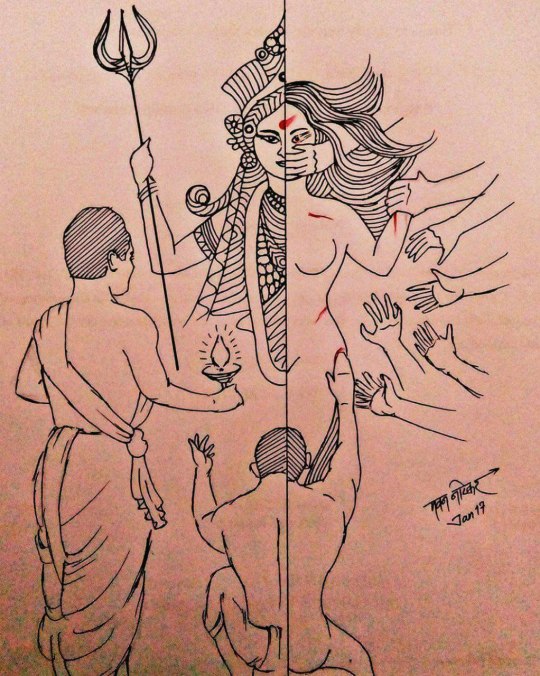
Since woman’s greatest misfortune has been that she was looked upon as either angel or devil, her true salvation lies in being placed on earth; namely, in being considered human.
— Emma Goldman, Woman Suffrage
There is no difference whatever between the goddess of fortune and the women who secure many blessings for the sake of bearing children, who are worthy of worship and who form the glory of their household.
Manu assigned to women sleep, sitting, ornament, lust, anger, dishonesty, malice and bad conduct.
— Manu, Manusmriti (9.26, 9.17)
#emma goldman#Woman Suffrage#manu#Manusmriti#leftistquotes#book quotes#quotes#quoteoftheday#book quote#life quote#beautiful quote#quote#quotable#ausgov#politas#auspol#tasgov#taspol#australia#fuck neoliberals#neoliberal capitalism#anthony albanese#albanese government#anti capitalism#anti colonialism#anti cop#anti colonization#class war#antiauthoritarian#antinazi
2 notes
·
View notes
Text
Identifying and Establishing Kulguru and Kuladevi in Sanatana Dharma: A Vedic and Upanishadic Perspective
Introduction Purpose and Scope: Sanatana Dharma, often referred to as Hinduism, is one of the oldest spiritual traditions in the world, deeply rooted in the sacred texts of the Vedas and Upanishads. It encompasses a wide array of beliefs, practices, and philosophies, all aimed at realizing the ultimate truth and achieving spiritual liberation (moksha). Among the various practices and…

View On WordPress
#Chanakya#Hindu Spirituality#Kuladevi#Kulguru#Manusmriti#Sanatana Dharma#Upanishadic perspective#Vedic perspective#Vivekananda
1 note
·
View note
Text
Delhi University Confirms: Manusmriti Permanently Removed from Curriculum
Delhi University has officially reaffirmed that the Manusmriti will not be part of any academic course, putting an end to repeated debates over the ancient text’s place in higher education.
In a formal announcement on X (formerly Twitter), the university confirmed the complete removal of Manusmriti from its syllabus. The controversial text was earlier listed as a "recommended reading" under the Sanskrit department's four-credit paper titled Dharamshastra Studies. That course has now been entirely scrapped from the curriculum.

The Dharamshastra Studies course was introduced under the Undergraduate Curriculum Framework (UGCF) aligned with the National Education Policy (NEP) 2020. Alongside the Manusmriti, the paper also featured classical texts like the Ramayana, Mahabharata, Puranas, and Arthashastra.
This move follows consistent backlash and public debate regarding the inclusion of Manusmriti in academic syllabi. In March, DU Vice Chancellor Yogesh Singh had already clarified that the text would not be part of any study material, after a history department panel controversially proposed its inclusion in the History (Honours) program.
A similar uproar had erupted last year when the Faculty of Law considered adding Manusmriti to its syllabus. The proposal was quickly withdrawn after protests from faculty members.
Reiterating the university’s clear stance, Vice Chancellor Singh told Hindustan Times, “Our stand remains the same. Manusmriti will not be taught in any course at DU. The university had made that clear in the past. The text has been removed from the Sanskrit department’s Dharamshastra Studies. In the future, if such suggestions arise again, they will be immediately withdrawn by the administration.”
This decisive step marks a significant moment in DU’s curriculum reforms, aiming to balance academic freedom with contemporary ethical considerations.
0 notes
Text
Varna Religion
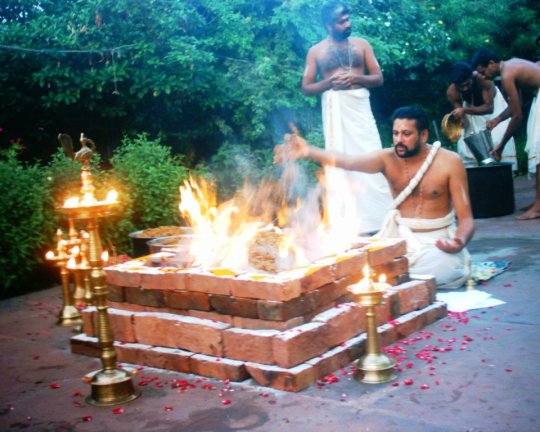
The term Varna (Sanskrit: वर्ण) refers to a traditional social classification system rooted in the religious and philosophical texts of ancient India, particularly those affiliated with Vedic Hinduism. Often translated as “class” or “color,” the Varna system outlines a four-fold division of society based on duties, responsibilities, and ritual status. This system forms one of the central frameworks of Dharma—the cosmic law and moral order—in Hindu thought and has deeply influenced the religious, social, and cultural life of the Indian subcontinent over millennia.

The Varna system is first articulated in the Rigveda, the oldest of the four canonical Vedas, composed circa 1500–1200 BCE. The most famous reference is found in the Purusha Sukta (Rigveda 10.90), a hymn describing the cosmic sacrifice of the primordial being Purusha, from whose body the four Varnas are said to have originated:
Brahmins (priests and scholars) came from Purusha’s mouth,
Kshatriyas (warriors and rulers) from his arms,
Vaishyas (merchants and agriculturists) from his thighs,
Shudras (servants and laborers) from his feet.
This mythological origin reflects the religious conception of a divinely sanctioned social order, where each Varna has a specific role to play in maintaining cosmic balance.

The Brahmins, emerging from the head of Purusha, are portrayed in Vedic texts as the custodians of sacred knowledge (Veda) and the conductors of yajña (ritual sacrifice). Their primary religious function was to serve as intermediaries between the human and divine realms, maintaining the universe through precise ritual performance and recitation of mantras. Brahmins were traditionally forbidden from engaging in commercial or martial activities and were expected to lead lives of celibacy, study (svādhyāya), teaching (adhyāpana), and spiritual detachment.
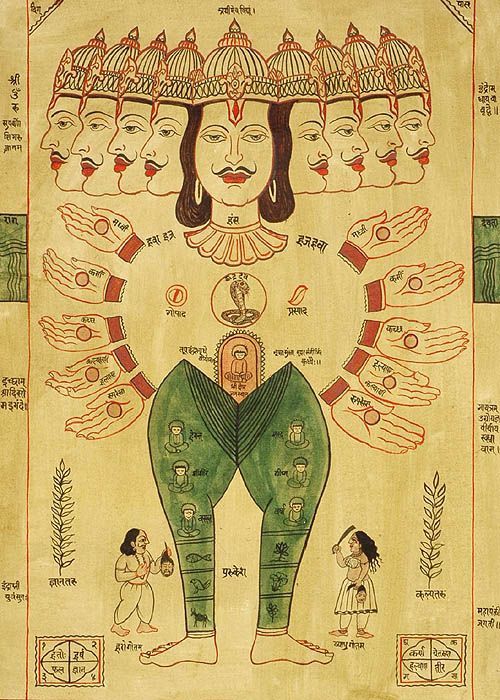
The concept of Dharma, central to Hindu religious ethics, is integrally tied to Varna. Each Varna is assigned a Svadharma (one's own duty), which delineates the appropriate moral, occupational, and ritual behavior for members of that class. Classical texts such as the Manusmriti (ca. 2nd century BCE – 3rd century CE) and the Bhagavad Gita (circa 200 BCE – 200 CE) elaborate this framework:
Brahmana Dharma: study and teaching of the Vedas, performing sacrifices, giving and receiving alms.
Kshatriya Dharma: governance, warfare, protection of society, justice.
Vaishya Dharma: agriculture, cattle-rearing, trade, and economic activity.
Shudra Dharma: service to the other three Varnas, manual labor, and crafts.
The Bhagavad Gita, in particular, emphasizes the importance of performing one’s own Dharma over adopting that of another, even if the latter seems superior. It frames Varna as stemming from a person’s Guna (qualities) and Karma (actions), thus suggesting a more fluid and metaphysical origin rather than merely hereditary status.
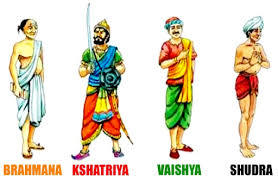
Throughout Indian religious history, the Varna system has been religiously justified through various theological arguments. Classical Hindu theologians such as Adi Shankaracharya (8th century CE) accepted the Varna system as part of Vyavaharika Satya (conventional reality), important for societal functioning, though ultimately sublated in Paramarthika Satya (ultimate reality) through realization of the Atman (Self) and Brahman (Absolute).
Dvaita and Vishishtadvaita schools also recognized Varna as a social necessity grounded in religious ideals. While these theistic traditions emphasized devotion (bhakti) and sometimes challenged ritual elitism, they rarely rejected Varna outright. The Bhakti movement (ca. 7th–17th centuries) offered a partial counterbalance by emphasizing personal devotion over ritual hierarchy, yet even many Bhakti saints operated within or tacitly acknowledged the Varna schema.

A critical religious dimension of the Varna system is its connection to the doctrines of karma and samsara (rebirth). According to Hindu eschatology, the Varna into which one is born is believed to result from accumulated karma from past lives. This framework reinforced both moral responsibility and social stratification, as it positioned Varna not as arbitrary birth, but as an outcome of cosmic justice.
This theological underpinning made social mobility within a lifetime rare, though not theoretically impossible. Scriptural injunctions, including passages in the Mahabharata, do suggest that individuals could shift Varnas based on conduct, knowledge, or spiritual realization—though such transitions were exceptional.
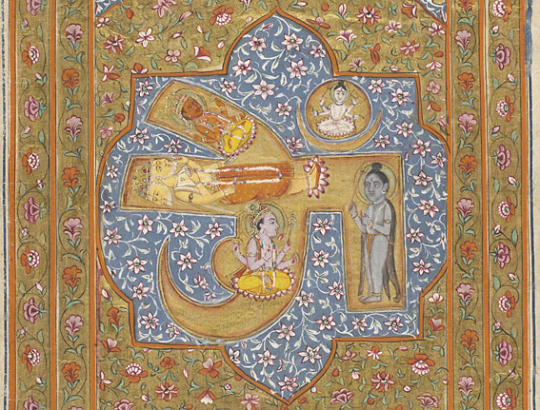
The Dharmaśāstra literature, especially texts like Manusmriti, Yājñavalkya Smriti, and Narada Smriti, extensively codify rules and duties for each Varna, governing aspects such as marriage, diet, clothing, purification rituals, inheritance, and punishment. These codes form the sacral legal tradition of Hindu society, often referred to as Varnashrama Dharma (the duties associated with one's Varna and stage of life).
The Ashrama system (student, householder, forest-dweller, renunciate) is meant to apply across all Varnas but is elaborated in more detail for Brahmins and Kshatriyas. The interplay of Varna and Ashrama structures an ideal Hindu life along religious, ethical, and social dimensions.
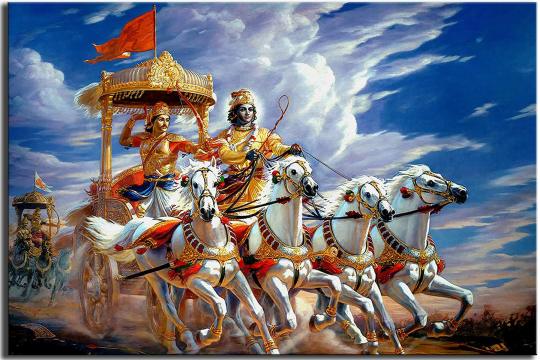
While the Varna system is deeply embedded in Hindu religious texts, it has not gone unchallenged within Indian religious traditions. The Śramaṇa movements—notably Buddhism and Jainism—emerged in the 6th century BCE as explicit critiques of Brahmanical orthodoxy and the Varna system. The Buddha rejected the notion that spiritual potential was linked to birth, asserting instead that ethical conduct and meditative insight determined spiritual worth.
Jain philosophy likewise emphasized personal asceticism, nonviolence (ahimsa), and karma without reference to Varna. Despite this, both religions often accommodated existing social norms for pragmatic reasons, and Jain lay communities often retained some form of Varna-like structure.
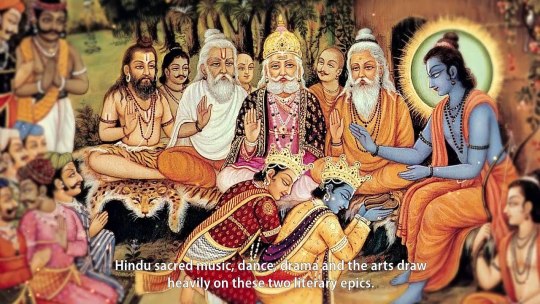
Scholars distinguish between Varna (the theoretical fourfold classification) and Jati (endogamous, occupation-based subgroups), which constitute the complex and localized caste system of India. While Varna is scriptural and pan-Indian, Jatis are historically developed, regionally varied, and far more numerous (numbering in the thousands).
Religiously, Jati identity has often been retroactively justified through the Varna framework, though in practice, there is not always a direct one-to-one mapping between the two. For example, many Jatis claim higher Varna status than others assign them, leading to hierarchical contestation and fluidity.
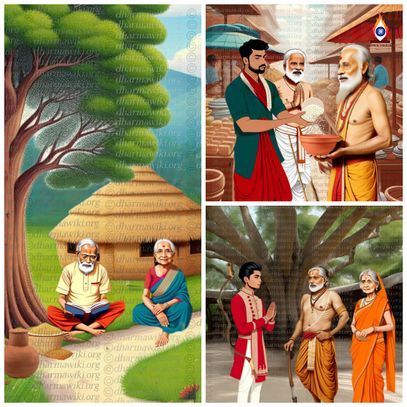
During the British colonial period, Orientalist scholars and colonial administrators interpreted the Varna system through a racial and hierarchical lens, often equating it with Western notions of caste and using it to justify colonial rule. These interpretations influenced legal, census, and educational policies that ossified caste identities in ways not always congruent with religious tradition.
In postcolonial India, reform movements such as those led by Swami Vivekananda, Mahatma Gandhi, and B.R. Ambedkar engaged deeply with the Varna system’s religious claims. Gandhi saw Varna as a spiritual division of labor, not hierarchy, and tried to restore its religious ideals in a non-oppressive form. Ambedkar, by contrast, rejected the Varna system outright as religiously sanctioned inequality, eventually converting to Buddhism and initiating a mass conversion movement.
In modern Hinduism, the religious role of the Varna system is contested and diminished. While traditionalists may continue to invoke it as a divine social order, many Hindus today view Varna as an outdated or symbolic concept, irrelevant to personal spirituality. Nonetheless, ritual roles (e.g., priesthood in certain temples) still often reflect Varna assumptions, particularly with the preference for Brahmin priests in Vedic rites.
Movements such as Arya Samaj, ISKCON, and various Dalit spiritual traditions reinterpret or reject Varna in light of universal spiritual access and egalitarian ideals. Yet in orthodox circles, Varna-based classifications retain residual authority, especially regarding marriage alliances, ritual eligibility, and temple administration.
The religious conception of Varna in Hinduism is a multifaceted and enduring phenomenon, deeply interwoven with Indian metaphysics, ethics, and ritual life. While its social implications have changed drastically over time, Varna continues to occupy a complex space in the religious imagination: simultaneously revered, reinterpreted, and resisted. As both a religious cosmology and a social ideal, the Varna system reflects the broader Indian quest to reconcile divine order with human diversity.
#hinduism#indian philosophy#vedic religion#varna system#ancient india#dharma#rigveda#manusmriti#bhagavad gita#hindu philosophy#indian history#religious studies#hindu theology#social stratification#spirituality#eastern philosophy#religious aesthetics#sacred texts#varnashrama dharma#karma and dharma#brahmin traditions#hindu ritual#indology#caste system#hindu culture#sanatana dharma#historical religion#hindu metaphysics#spiritual history#philosophy of religion
0 notes
Text
Brilliant Ambedkar’s Brilliant Copy
– Prof. Bal Ram Singh Ambedkar was a bright mind but mostly copying the West. He would someday be described the single most reason why India has lost its ancient moorings, as those have never been considered in the constitution that he helped draft, after three other people did not want to take the job. A former ambassador, Smt. Neelam Deo, in a seminar at Center for Indic Studies, UMass…

View On WordPress
0 notes
Text
Was Manu Humanity’s First Man? Shocking Vedic Origins Revealed!
Shocking Vedic Origins Revealed! Imagine a time so ancient that the world was new, and one man stood at the dawn of humanity. His name? Manu, the legendary figure hailed as the first man in Hindu mythology. Think of him as India’s Adam or Noah—a survivor, a lawgiver, and the father of us all. But was Manu real, or just a myth? Could Vedic texts hold clues to our origins? Let’s dive into the Manu…
#ancient India#first man#Hindu mythology#human origins#Manu#Manusmriti#Noah comparison#Rig Veda#Vedic origins#Yuga cycle
0 notes
Text
Manusmriti is more popular among leftists and hinduphobes than among actual hindus. I haven't read the manusmriti, I don't know anybody who has read manusmriti, I have never met a manusmriti enthusiast in my entire life, and the fringe online manusmriti defenders are just incel trads and I can bet they haven't even read the manusmriti they just want to stick it to the leftists, and I most likely won't ever read the manusmriti either. It isn't even divine, It is literally in the name 'smriti', It can be discarded for all I care. And 'Hindu apologist' HASSHSJSJS.
On the 25th of December, 1927, Dr Ambedkar held a public burning of the Manusmriti.
The Manusmriti lays down the rules for women and the "lower" castes in Hinduism. Read here what it says about women.
284 notes
·
View notes
Text
Proposal to Include Manusmriti in Law Courses Rejected - कायदा अभ्यासक्रमात मनुस्मृती समाविष्ट करण्याच्या प्रस्तावाला नकार
Proposal to Include Manusmriti in Law Courses Rejected - कायदा अभ्यासक्रमात मनुस्मृती समाविष्ट करण्याच्या प्रस्तावाला नकार
Proposal to Include Manusmriti in Law Courses Rejected – कायदा अभ्यासक्रमात मनुस्मृती समाविष्ट करण्याचा प्रस्ताव नाकारला Proposal to Include Manusmriti in Law Courses Rejected The Vice-Chancellor of Delhi University has firmly rejected a proposal to include Manusmriti in the law curriculum, highlighting significant concerns regarding its relevance and appropriateness in the context of modern…
#appropriateness#Delhi University#equality#human rights#justice#law curriculum#legal education#Manusmriti#relevance#secular framework#Vice-Chancellor#आधुनिक कायदा शिक्षण#धर्मनिरपेक्षता#न्याय#मानवी हक्क
0 notes
Text
You cannot 'reclaim' one of the main limbs of colonialism. Indians acted as the model minority and helped aid the British empire through the east India company and it's the reason why Indian populations in many countries are considered settlers. It's one of the most shameful and evil parts of history, this cannot and will not and should not be reclaimed.
#traitor Indians saw these bastards exploit and destroy our lands and history and thought 'hey i like that let me do that too'#like you're a bastard and i hope you burn with the manusmriti
10 notes
·
View notes
Note
Sorry to butt in, but ask the Anon why they hate Manusmriti. Is it particularly worse than other Dharmashastras? What part of this 5th century BCE law book is objectionable? Is Manusmriti still legally applied in Republic of India?
Manusmriti is wordshipped by sanghis
In modern day and age? I doubt those who you deem to be Sanghis have read Manusmriti. Heck, even priests don't read it. As far as I have seen, most Hindus in general acknowledge that the book is obsolete. There can be exceptions ofc, but I personally haven't seen anyone worshipping Manusmriti even on internet. Maybe you can send me an example.
7 notes
·
View notes
Text
Wolf Behavior in Sanatana Dharma: Debunking Myths and Understanding True Ethical Principles

Overview of Wolf Behavior and Sanatana Dharma
Brief Introduction to Wolf Behavior: Wolves are fascinating creatures known for their complex social structures and behaviors. As apex predators, they play a crucial role in maintaining the balance of ecosystems. Wolf packs, typically consisting of a breeding pair (often referred to as the alpha male and alpha female) and their offspring, exhibit intricate social dynamics that have been the subject of extensive study by ethologists and wildlife biologists. Social Structure and Pack Dynamics: Wolf packs are hierarchical, with clear roles and responsibilities for each member. The alpha pair leads the pack, making decisions related to hunting, movement, and defense. Below the alphas, there are beta wolves, which help maintain order and assist in various tasks. At the bottom of the hierarchy are the omega wolves, often scapegoated but serving essential social functions by diffusing tensions within the pack. Each wolf's role is vital to the pack's survival. The alpha wolves provide leadership, the betas support and enforce rules, and the omegas help prevent conflicts from escalating. Cooperation and communication are key aspects of wolf behavior, with howling, body language, and scent marking being primary modes of interaction. Hunting and Feeding: Wolves are cooperative hunters, relying on teamwork to bring down prey much larger than themselves, such as deer, elk, and moose. This cooperation involves strategic planning, communication, and precise execution. Once the prey is captured, a strict feeding order is observed, starting with the alpha pair, followed by other members according to their rank. Reproduction and Pups Rearing: The breeding season is another critical aspect of wolf behavior. The alpha female typically gives birth to a litter of pups, which the entire pack helps to raise. This communal rearing includes feeding, protecting, and teaching the pups essential survival skills. The investment in the younger generation ensures the continuity and strength of the pack. Territoriality and Defense: Wolves are territorial animals, and pack members work together to defend their territory from intruders. Scent marking and howling are used to delineate boundaries and communicate presence. Territorial disputes can lead to aggressive encounters, but often, the mere presence and vocalization of a pack are enough to deter rivals. Explanation of Sanatana Dharma Principles Sanatana Dharma, often referred to as Hinduism in the modern context, is one of the oldest continuous spiritual traditions in the world. The term "Sanatana Dharma" translates to "eternal duty" or "eternal order," emphasizing timeless principles that govern life and the universe. Unlike many other religions, Sanatana Dharma is not confined to a single founder, scripture, or dogma but is a broad and inclusive tradition encompassing diverse philosophies, practices, and beliefs. Core Principles of Sanatana Dharma Dharma (Duty and Righteousness): Dharma is a fundamental concept in Sanatana Dharma, referring to the moral and ethical duties that sustain order and harmony in the universe. It encompasses duties towards oneself, family, society, and the natural world. Dharma varies according to one's role, age, and circumstances, guiding individuals to act righteously and responsibly. Rta (Cosmic Order): Rta represents the natural order of the cosmos, the principle that maintains balance and harmony in the universe. It is closely related to Dharma, as living in accordance with Dharma ensures alignment with Rta. This principle underscores the interconnectedness of all life and the importance of living in harmony with nature. Karma (Action and Consequence): Karma is the law of cause and effect, where every action has consequences. It teaches that righteous actions lead to positive outcomes, while wrongdoings result in negative consequences. Karma emphasizes personal responsibility and the ethical implications of one's actions. Ahimsa (Non-Violence): Ahimsa is the principle of non-violence and respect for all living beings. It advocates compassion, kindness, and the avoidance of harm, both physically and mentally. Ahimsa is a core value in many aspects of Sanatana Dharma, influencing dietary practices, social interactions, and spiritual development. Respect for All Life Forms: Sanatana Dharma teaches that all life forms are manifestations of the divine and deserve respect and compassion. This respect extends to animals, plants, and the environment, emphasizing the sacredness of all creation. Yajna (Sacrifice and Selfless Service): Yajna originally referred to Vedic rituals of offering to the gods but has evolved to mean any act of selfless service or sacrifice for the greater good. It embodies the spirit of giving without expecting anything in return, contributing to the welfare of others and the cosmos. Atman and Brahman (Self and Universal Consciousness): Atman refers to the individual soul, while Brahman represents the universal consciousness or supreme reality. Sanatana Dharma teaches that realizing the unity between Atman and Brahman is the ultimate goal of life, leading to liberation (moksha). The Four Purusharthas (Goals of Human Life): Sanatana Dharma outlines four main goals for human life: Dharma (righteousness), Artha (material prosperity), Kama (pleasure), and Moksha (liberation). These goals provide a balanced framework for living a fulfilling and meaningful life. Purpose of the Article This article aims to explore the intersections between wolf behavior and the principles of Sanatana Dharma, highlighting the profound lessons that can be drawn from understanding these natural and spiritual systems. By examining wolf behavior through the lens of Sanatana Dharma, we can debunk common misconceptions and gain deeper insights into ethical principles, social structures, and the interconnectedness of all life. Exploring Intersections: The intricate social structures and behaviors of wolves offer a unique perspective on the principles of Sanatana Dharma. The cooperative nature of wolf packs, their hierarchical organization, and their methods of communication and conflict resolution mirror many aspects of human society and ethical living as outlined in Sanatana Dharma. By understanding these parallels, we can appreciate the wisdom embedded in both natural and spiritual systems. Debunking Misconceptions: There are numerous misconceptions about wolf behavior and the principles of Sanatana Dharma. Some view wolves as ruthless predators with aggressive social structures, while others misunderstand the principles of Sanatana Dharma as rigid and outdated. This article seeks to clarify these misconceptions by presenting accurate information and drawing parallels that highlight the ethical and social wisdom inherent in both systems. Drawing Lessons for Modern Society: In a world facing numerous social, environmental, and ethical challenges, the lessons from wolf behavior and Sanatana Dharma can provide valuable insights. From understanding the importance of cooperation and collective responsibility to appreciating the interconnectedness of all life, these lessons can inform contemporary discussions on sustainability, community living, and ethical conduct. By integrating ancient wisdom with modern knowledge, we can find holistic solutions to the complex issues of our time. Section Expansion: Overview of Wolf Behavior: Wolves have captivated human imagination for centuries, often depicted in folklore, mythology, and literature as symbols of wildness, cunning, and social order. These creatures are not solitary hunters but highly social animals with complex behaviors and strong family bonds. The structure of a wolf pack and its dynamics offer valuable insights into the principles of leadership, teamwork, and social responsibility. Hierarchy and Leadership: The hierarchical structure of a wolf pack is often misunderstood as purely aggressive dominance. In reality, leadership within a pack is based on experience, wisdom, and the ability to provide for and protect the group. The alpha pair, typically the most experienced and capable wolves, lead the pack through their actions rather than through fear or coercion. This leadership is earned through demonstration of skills and consistent fulfillment of pack needs. The betas and other subordinate wolves support the alphas, ensuring the pack functions smoothly. This structure minimizes conflict and promotes stability, allowing the pack to focus on survival and reproduction. The cooperation among pack members highlights the importance of each role, no matter how seemingly insignificant, in maintaining the pack's overall health and success. Communication and Social Bonds: Wolves communicate through a variety of vocalizations, body language, and scent marking. Howling, the most iconic form of wolf communication, serves multiple purposes: it strengthens social bonds, coordinates group activities, and marks territory. Body language, such as tail position, ear orientation, and facial expressions, conveys messages about status, intentions, and emotions. The social bonds within a pack are reinforced through grooming, play, and cooperative activities like hunting and pup rearing. These behaviors build trust and cohesion, essential for the pack's survival. The emphasis on communication and social bonds within a wolf pack mirrors the human need for connection, collaboration, and community. Survival and Adaptability: Wolves are highly adaptable animals, capable of surviving in diverse environments ranging from forests and mountains to tundra and deserts. This adaptability is a testament to their resilience and resourcefulness. They can modify their hunting strategies based on the type of prey available, demonstrating remarkable flexibility and ingenuity. The survival of a wolf pack depends on its ability to work together, adapt to changing conditions, and overcome challenges. This adaptability is a key lesson for human societies, emphasizing the importance of resilience, innovation, and cooperation in the face of adversity. Explanation of Sanatana Dharma Principles Sanatana Dharma, often equated with Hinduism, is a vast and profound spiritual tradition that encompasses a wide range of beliefs, practices, and philosophies. Its principles offer a comprehensive guide to living a righteous and fulfilling life, emphasizing the interconnectedness of all beings and the importance of adhering to natural law. Dharma: The Path of Righteousness: Dharma is a central concept in Sanatana Dharma, often translated as duty, righteousness, or moral law. It represents the ethical guidelines and responsibilities that govern an individual's conduct, ensuring harmony within the self and society. Dharma is not a one-size-fits-all principle; it is contextual and varies according to one's age, occupation, and stage of life. The concept of Dharma extends beyond personal ethics to encompass social and cosmic order. It encourages individuals to fulfill their roles and responsibilities with integrity and dedication, contributing to the overall balance and well-being of the universe. Rta: The Cosmic Order: Rta, or cosmic order, is the underlying principle that governs the universe. It is the natural law that maintains balance and harmony in the cosmos, ensuring the proper functioning of all elements. Adhering to Rta means living in alignment with the natural rhythms and cycles of life, recognizing the interconnectedness of all beings. In Sanatana Dharma, Rta is closely linked to Dharma. By following one's Dharma, an individual aligns with Rta, contributing to the maintenance of cosmic order. This principle underscores the importance of living in harmony with nature and respecting the intrinsic order of the universe. Karma: The Law of Cause and Effect: Karma is the principle of action and consequence, teaching that every action has repercussions. It is a fundamental law of the universe, emphasizing personal responsibility and the ethical implications of one's actions. Good actions lead to positive outcomes, while negative actions result in adverse consequences. Karma operates across lifetimes, influencing one's current circumstances and future destinies. It encourages individuals to act with mindfulness and compassion, recognizing the impact of their deeds on themselves and others. The concept of Karma reinforces the importance of ethical living and the pursuit of righteousness. Ahimsa: The Principle of Non-Violence: Ahimsa, or non-violence, is a core value in Sanatana Dharma. It advocates for compassion, kindness, and the avoidance of harm to all living beings. Ahimsa extends beyond physical non-violence to include non-violence in thoughts and words, promoting a culture of peace and respect. The practice of Ahimsa is rooted in the recognition of the divine presence in all beings. It encourages individuals to cultivate empathy and understanding, fostering harmonious relationships and reducing conflicts. Ahimsa is a guiding principle for ethical conduct and spiritual growth. Respect for All Life Forms: Sanatana Dharma teaches that all life forms are sacred and deserve respect. This principle is based on the belief that every being is a manifestation of the divine and has an intrinsic value. Respect for life extends to animals, plants, and the environment, emphasizing the need to live in harmony with nature. The reverence for life in Sanatana Dharma is reflected in various practices and rituals that honor and protect the natural world. It encourages sustainable living and environmental stewardship, recognizing the interdependence of all beings. Yajna: Sacrifice and Selfless Service: Yajna, originally a Vedic ritual of offering to the gods, has evolved to mean any act of selfless service or sacrifice for the greater good. It embodies the spirit of giving without expecting anything in return, contributing to the welfare of others and the cosmos. Yajna emphasizes the importance of selflessness and altruism, encouraging individuals to act for the benefit of society and the environment. It is a reminder that personal well-being is interconnected with the well-being of others, fostering a sense of collective responsibility. Atman and Brahman: Self and Universal Consciousness: Atman refers to the individual soul, the true self that is eternal and beyond the physical body. Brahman represents the universal consciousness or supreme reality that pervades everything. Sanatana Dharma teaches that realizing the unity between Atman and Brahman is the ultimate goal of life, leading to liberation (moksha). The realization of this unity transcends the ego and individual limitations, offering a profound sense of peace and fulfillment. It encourages individuals to seek self-knowledge and spiritual growth, recognizing their divine nature and the interconnectedness of all existence. The Four Purusharthas: Goals of Human Life Sanatana Dharma outlines four main goals for human life, known as the Purusharthas: Dharma (righteousness), Artha (material prosperity), Kama (pleasure), and Moksha (liberation). These goals provide a balanced framework for living a fulfilling and meaningful life. Dharma: The pursuit of righteousness and ethical living. Artha: The pursuit of material prosperity and economic well-being. Kama: The pursuit of pleasure and emotional fulfillment. Moksha: The pursuit of liberation from the cycle of birth and death. The Purusharthas guide individuals to achieve a harmonious balance between their material and spiritual aspirations, leading to holistic well-being. By exploring the parallels between wolf behavior and the principles of Sanatana Dharma, this article aims to shed light on the profound wisdom embedded in both natural and spiritual systems. Understanding these connections can help debunk common misconceptions and provide valuable lessons for modern society. The principles of Dharma, Rta, Karma, Ahimsa, and respect for all life offer timeless guidance for ethical living, social harmony, and environmental stewardship. By integrating these ancient teachings with contemporary knowledge, we can find holistic solutions to the complex challenges of our time, fostering a more compassionate, responsible, and sustainable world. Wolf Behavior in Sanatana Dharma Pack Dynamics and Social Structure Detailed Explanation of Wolf Pack Dynamics: Wolf packs are emblematic of social cohesion and structured hierarchy. Understanding the dynamics within a wolf pack reveals a complex system of roles, responsibilities, and relationships that ensure the survival and prosperity of the group. A typical wolf pack consists of a breeding pair, known as the alpha male and female, their offspring, and sometimes other subordinate adults. The alpha pair leads the pack, making crucial decisions regarding hunting, territory defense, and movement. Their leadership is not about sheer dominance but about experience, wisdom, and the ability to ensure the pack's survival. Below the alphas are the beta wolves, which act as second-in-command. They help enforce the alpha's decisions, mediate conflicts, and can take over leadership if necessary. Omega wolves, often found at the lowest rank, serve as stress-relievers for the pack. They help diffuse tension and can often be the target of mock aggression, which prevents more severe conflicts within the pack. Each wolf has a specific role that contributes to the overall functionality and efficiency of the pack. These roles are fluid to some extent, as wolves may shift roles based on circumstances such as the birth of new pups, the death of a pack member, or changes in the environment. The cohesive and cooperative nature of these roles ensures the pack operates as a unified entity, capable of achieving tasks that would be impossible for a solitary wolf. Comparison with the Varna and Ashrama Systems in Sanatana Dharma The structured hierarchy and role distribution in wolf packs can be compared to the Varna (caste) and Ashrama (stages of life) systems in Sanatana Dharma. Both systems emphasize the importance of fulfilling one's duty within a social framework to ensure harmony and balance. Varna System: The Varna system is a classification of society into four primary groups based on duties and responsibilities: Brahmins: Scholars, teachers, and priests responsible for preserving and disseminating knowledge, conducting rituals, and guiding the community in spiritual matters. They parallel the alpha wolves in their leadership and decision-making roles, guiding the pack with wisdom and experience. Kshatriyas: Warriors and rulers tasked with protecting the community and upholding justice. Similar to the beta wolves, they enforce order and defend the pack, ensuring the safety and stability of the group. Vaishyas: Merchants and agriculturists responsible for trade, commerce, and the production of goods. Their role can be compared to the other adult wolves that contribute to the pack's sustenance through hunting and foraging. Shudras: Laborers and service providers who perform various tasks that support the functioning of society. They can be likened to omega wolves, who, despite being at the lower end of the hierarchy, play essential roles in maintaining social harmony and diffusing tension. Each Varna has its unique duties (Svadharma) that contribute to the overall well-being and stability of society. Read the full article
#adaptiveleadership#AdikkaHomePage#Ahimsa#ancientwisdom#collectiveresponsibility#communityliving#Cooperation#CorporateEthics#environmentalstewardship#Ethicaldecision-making#EthicalPrinciples#Leadership#Manusmriti#ModernSociety#Rta#SanatanaDharma#socialresponsibility#Sustainability#systemsthinking#Upanishads#Vedas#Vivekananda#Wolfbehavior
0 notes
Text
Ambedkar Statue : ಬೆಂಗಳೂರಿನಲ್ಲಿ ದೇಶದ ಅತಿ ಎತ್ತರದ ಅಂಬೇಡ್ಕರ್ ಪ್ರತಿಮೆ: ಸಿಎಂ ಸಿದ್ದರಾಮಯ್ಯ ಘೋಷಣೆ
Ambedkar Statue – ಭಾರತದ ಸಂವಿಧಾನ ಶಿಲ್ಪಿ ಡಾ. ಬಿ.ಆರ್. ಅಂಬೇಡ್ಕರ್ ಅವರ 134ನೇ ಜಯಂತಿಯ ಸಂದರ್ಭದಲ್ಲಿ ಬೆಂಗಳೂರಿನ ಕೆಪಿಸಿಸಿ ಕಚೇರಿಯ ಭಾರತ್ ಜೋಡೋ ಭವನದಲ್ಲಿ ಆಯೋಜಿತ ಕಾರ್ಯಕ್ರಮದಲ್ಲಿ ಮುಖ್ಯಮಂತ್ರಿ ಸಿದ್ದರಾಮಯ್ಯ ಅವರು ಮಹತ್ವದ ಘೋಷಣೆ ಮಾಡಿದ್ದಾರೆ. ಬೆಂಗಳೂರಿನಲ್ಲಿ ದೇಶದ ಅತಿ ಎತ್ತರದ ಅಂಬೇಡ್ಕರ್ ಪ್ರತಿಮೆ ಸ್ಥಾಪನೆ ಮಾಡಲಾಗುವುದು ಎಂದು ತಿಳಿಸಿದ್ದಾರೆ. ಜೊತೆಗೆ, ಅಂಬೇಡ್ಕರ್ ಮ್ಯೂಸಿಯಂ ಕೂಡ ರಾಜಧಾನಿಯಲ್ಲಿ ಸ್ಥಾಪನೆಯಾಗಲಿದೆ ಎಂದು ಹೇಳಿದ್ದಾರೆ. Ambedkar Statue –…
#Ambedkar Jayanti 2025 Karnataka#Ambedkar legacy in Karnataka#Ambedkar Museum in Bangalore#Ambedkar statue height India#Bharat Jodo Bhavan Ambedkar event#Dr. B.R. Ambedkar statue news#Manusmriti fire Ambedkar history#Siddaramaiah Ambedkar announcement#Social justice Ambedkar ideals#Tallest Ambedkar statue Bengaluru
0 notes